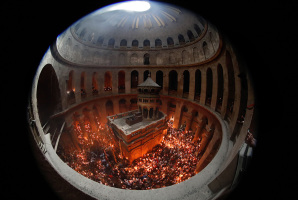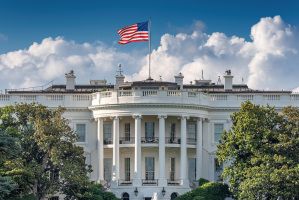The Life and Papacy of John Paul II - Karol Josef Wojtyla (1920-2005)
And though his life may have been extraordinary and momentous after he ascended to the papacy in 1978 at age 58, the years leading up to that point helped to mold him.
The life of Karol Josef Wojtyla, better known as Pope John Paul II, represented hope and strength to many people around the world. Millions have joined together in mourning his passing.
And though his life may have been extraordinary and momentous after he ascended to the papacy in 1978 at age 58, the years leading up to that point helped to mold him.
From modest beginnings in a town on the outskirts of Poland’s capital, Krakow, to the death of his entire immediate family at the young age of 20, to persecution by German Nazis in the 1940s and life in a communist state well into his adult life, the early years of the Karol Josef Wojtyla provide a backdrop to round out the man who, for many, was a greatly revered moral and Christian leader.
Simple Youthful Friendship
Karol Josef Wojtyla was born in Wadowice, Poland on May 18, 1920. His father, Karol Wojtyla, (pronounced voy-TIH-wah) was a former army officer and tailor. His mother, Emilia Kaczorowska Wojtyla, was a schoolteacher.
Wadowice is about 35 miles southwest of Krakow, the capital. The population at the time consisted of 8,000 Catholics and 2,000 Jews
He grew up simply, in a second-floor apartment owned by a Jewish family, according to the Los Angeles Times.
One of his childhood friends, Jerzy Kluger, was a Jew who remembers the soccer games the children used to play. The games were usually Catholics versus Jews. Kluger said that young Karol Wojtyla would volunteer to play on the Jewish side to even the playing field.
“There usually was not enough Jews, so somebody had to play on the Jewish team and he was always sort of ready, you know,” said Kluger in a 2003 interview with CNN.
The friendship formed at the time was providential. Much later, in 1993, it was Kluger whom John Paul II called on to act as an intermediary between Israeli and Vatican officials in negotiations that led the Vatican to grant Israel formal diplomatic relations, according the New York Times.
Loss at a Young Age
Karol was athletic. He swam in the Skawa River, and was a soccer goalie that often stopped to pray on his way to school, according to the LA Times.
In 1929, when he was almost 9, his mother died of a kidney ailment. He made his first Holy Communion the same month she died. Three years later, his older brother Edmund, a doctor, died from scarlet fever, according to the Times.
Wojtyla was raised by his devoted father in modest surroundings.
In 1938, after graduating from secondary school, Wojtyla moved with his father to Krakow and enrolled at Jagiellonian University to study literature and philosophy, according to CNN.
Wojtyla had a passion for theater and founded an underground company to avoid the attention of communist officials. He also took part in poetry readings and literary discussions. One friend said he was talented actor.
“He was wise not only in the usual meaning of the word, but also in the artistic sense. He knew what to do with a word. He knew how to say it,” said Danuta Michalowska in a 2003 interview with CNN.
Wojtyla survived the German occupation of Poland by taking a job as a stonecutter in a quarry in 1940.
His father, who was a devout Catholic, died in 1941 with an unfulfilled wish to see his son devote his life to the priesthood.
A Passionate Academic, Institutional Rise to Prominence
A year and a half later, Wojtyla began studying theology in an underground seminary in Krakow though Nazis were persecuting priests who opposed them, according to CNN.
When Germans began to round up Polish men, Wojtyla took refuge in the residence of the Archbishop of Krakow until the end of the war. In 1946, he was ordained. By 1948 he had earned a doctorate in ethics.
In 1953, he earned a doctorate in theology and began to teach at church’s seminary in Krakow. He also became a professor and chairman of the philosophy department at the Catholic University in Lublin in 1954.
Wojtyla ascended rapidly through the Catholic hierarchy after this, becoming an auxiliary bishop in 1958 and an archbishop in 1964. In 1967, Pope Paul VI made Wojtyla a cardinal.
He was opposed to communism but the appointment was welcomed by the Polish government who saw Wojtyla as “tough but flexible” and a moderate reformer, according to CNN.
Current Biography said Wojtyla was “a resilient enemy of communism and champion of human rights, a powerful preacher and a sophisticated intellectual able to defeat Marxists in their own line of dialogue.”
When asked if he feared retribution from government officials, Wojtyla replied, “I’m not afraid of them. They are afraid of me,” according to CNN.
In the years following his appointment as Cardinal, Wojtyla established a well-regarded reputation as a scholar, administrator and fund-raiser.
In 1978, after John Paul I died unexpectedly after on only 33 days as pope, Cardinals convened to elect the successor. After 7 inconclusive votes, they selected Wojtyla. On October 16, 1978, Wojtyla became Pope, taking the name John Paul II. He accepted his election as Pope with tears, according to CNN.
He became the youngest pope in more than 120 years and the first non-Italian pope since Adrian VI of the Netherlands was elected in 1522, according to the Times.
A Charismatic Papacy
As pope, John Paul II became a tireless traveler who visited 125 countries during his 26-year tenure. He drew huge crowds that at times grew into masses of millions. He was also multi-lingual, speaking eight languages.
John Paul II displayed great charisma. Author of “The Making of Popes 1978,” Andrew M. Greely wrote of the pope’s way of attending to a crowd: "His moves, his presence, his smile, his friendliness, his gestures ... have pleased everyone. ... He is great with crowds -- shaking hands, smiling, talking, kissing babies,” according to CNN.
When he returned to Poland in 1997, the LA times reported that at his appearance, the crowds grew silent, “some falling to their knees and weeping as John Paul (parted) the crowd on a path to the altar.”
He was a vigorous pope before his health began to decline.
“He is almost physically incapable of wasting a minute. Yet I have never seen him anguished or tense,” said papal spokesman Joaquin Navarro-Valls once, according to the Times.
Even stern Cuban leader Fidel Castro, known for usually wearing olive-colored military fatigues, put on a business suit when John Paul II visited his country in 1998.
Engaging the World
The Pope engaged himself in wide-ranging issues, especially in regard to human rights.
“His engagement as pontiff was not only to spread out the gospel, to spread out the faith, but also to transform the roman papacy into the spokesman of human rights,” said Marco Politi, the author of “His Holiness,” to CNN in 2003.
He criticized dictators Alfred Stroessner in Paraguay, Agusto Pinochet in Chile and Ferdinand Marcos in the Phillippines.
He helped speed the fall of communism in Poland by supporting the Solidarity movement there.
The pope’s visit to his native Poland in 1979 drew huge crowds who were emboldened to challenge their government. This helped to speed the downfall of the Soviet Union and its Allies in Eastern Europe, according to the Associated Press.
He also had words of criticism for the West. Upon his first visit to the United States, he warned the nation about the dangers of materialism, selfishness and secularism. He also suggested lowering the standard of living and sharing the wealth with the Third world.
He insisted that materialism was not the answer. “This world is not capable of making man happy,” said John Paul. He viewed the relationship with God as the primary pursuit of life. He prayed so often that he was said to make decisions “on his knees,” said CNN.
A Voice for Social, Religious Conservatism
Another prominent theme in John Paul’s papal tenure was his conservative stance on social issues and Church doctrine. He absolutely rejected contraception and abortion, which alienated many Catholics.
“When he came to power and he was elected, he realized that one thing he had to do was to restore clarity to Catholic teaching. And he says, 'OK, maybe they won't obey, maybe they don't accept, but at least they'll know what the church stands for,'" said Wilton Wynn, author of "Keeper Of The Keys,” in an interview with CNN.
The pope once said to Time that “It’s a mistake to apply American democratic procedures to faith and truth.” He added, “you cannot take a vote on the truth.”
The pope was also active in silencing liberal views within Catholicism. “The church cannot be an association of free thinkers,” he said in 1981, according to CNN
He was also completely opposed to abortion and euthanasia. In a 1995 encyclical condemning the “culture of death,” he said that abortion “always constitutes a grave moral disorder since it is the deliberate killing of an innocent human being,’ said the pope, according to CNN.
Other social issues he was opposed to were artificial insemination, sex outside marriage, and homosexual relations – though he urged tolerance for homosexuals.
During his tenure, he refused to ordain women, saying that the church should follow the example of Jesus who only chose men as his apostles, according to AP.
He also emphasized the need for the clergy to be celibate.
Following the Path of Reconciliation
Although John Paul’s legacy certainly includes his efforts at reconciliation with other Christians, and even interfaith dialogues, one example of John Paul’s personal sense of hope for setting things right again was the forgiveness he showed for the man who tried to assassinate him in 1981.
On May 13 of that year, while the pope was entering St. Peter’s Square in Rome to address an audience, a Turkish gunman named Mehmet Ali Agca shot the Pope, nearly killing him. That same year, two days after Christmas, the pope went to the prison where his would-be assassin was staying and held a conversation with him. The two spoke softly and once or twice, Agca laughed, according to Time magazine. The Pope forgave him.
The pope sought reconciliation with various branches of Christianity, including the eastern Orthodox and Anglican churches. However the decision of the Church of England to ordain women in 1992 and the U.S. Episcopal Church’s decision to elect an openly homosexual bishop in 2004 may have hindered those efforts.
The pope also reached out to Jews, publicly asking for God’s forgiveness for the persecution of Jews by Catholics throughout time. In 1993, the Vatican established formal diplomatic relations with Israel.
Visiting Israel in March of 2000 he stood in Bethlehem, the birthplace of Jesus. He overlooked the Sea of Galilee. He also stood at a spot overlooking the Sea of Galilee where it is said that Jesus preached the Sermon on the Mount, according to the Times.
Of the trip to Jerusalem, the Times says he wrote, "To go in a spirit of prayer from one place to another, from one city to another, helps us not only to live our life as a journey.”
It “also gives us a vivid sense of a God who has gone before us and leads us on, who himself set out on man's path, a God who does not look down on us from on high, but who became our traveling companion."





























